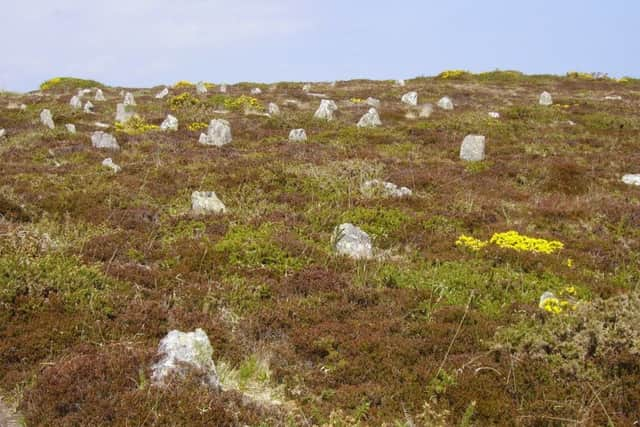The mysterious stone rows of Scotland's far north
The stone rows of the north of Scotland, which are found only in Caithness and Sutherland, are little studied and often overlooked.
At one site, the Hill o Many Stanes in Caithness, around 200 stones radiate out on a slope from a central point across 22 rows.


Advertisement
Hide AdPreviously, it was believed the stones were a guide to the movement of the moon.
But academics from Glasgow University perhaps have an even more tantalising theory - that each stone was laid when a member of a nearby Bronze Age community passed away.
Ultimately, the stone rows could memorialise entire villages rooted in the far north around 4,000 years ago.


Dr Kenneth Brophy, senior archaeology lecturer at Glasgow University, said: “What is fascinating about the stone rows is the number of stones. At the Hill o Many Stanes you will find around 200 stones. The collection of stones alone makes them a really remarkable monument.
“I think they are monuments built by Bronze Age communities. If someone died, a new stone was laid to remember them. They were types of memorial stones.”
Tests carried out by Dr Brophy and colleagues show there are no bodies buried under the stone rows.
Advertisement
Hide AdHowever, in some cases, the stone rows run off a central burial cairn which could have been the final resting place of a key figure in the community.
Dr Brophy said the monument represented a “stone record of a community at a time when people didn’t have written records.”
Advertisement
Hide AdThe oddly shapes stones may have been used to represent different individuals within the community, he added.
He added: “Although we can’t fill in the details, to me it looks as if they are really representing the long history of prehistoric communities.
“They are now in locations which seem very remote but we know Bronze Age people lived and farmed the landscapes.
“The rows have been found close to field clearance cairns and roundhouses and the stone rows appear to be part of everyday life, rather than having a ceremonial purpose.”
There are around 20 sites of stone rows in the north of Scotland with similar arrangements found in Dartmoor, Ireland and Brittany in France.
However, the examples in Caithness and Sutherland are the only examples in Scotland.
Advertisement
Hide Ad“There are none of these stone rows in Orkney, which is obviously very close, or the mainland. They are really only found between Thurso and Wick. They are very, very localised. They landscape is very stony, so the monuments very much suit the land on which these people lived.”
